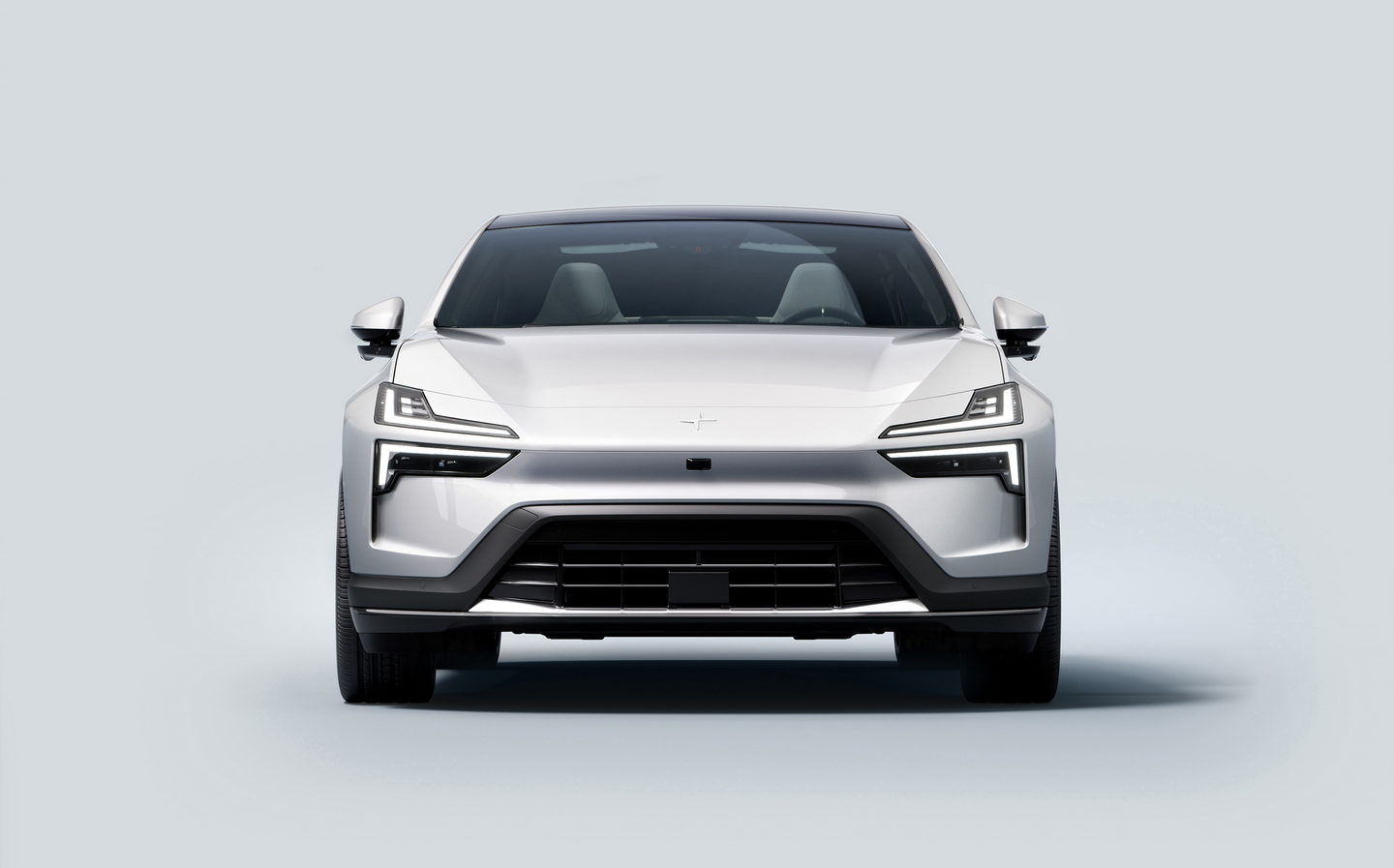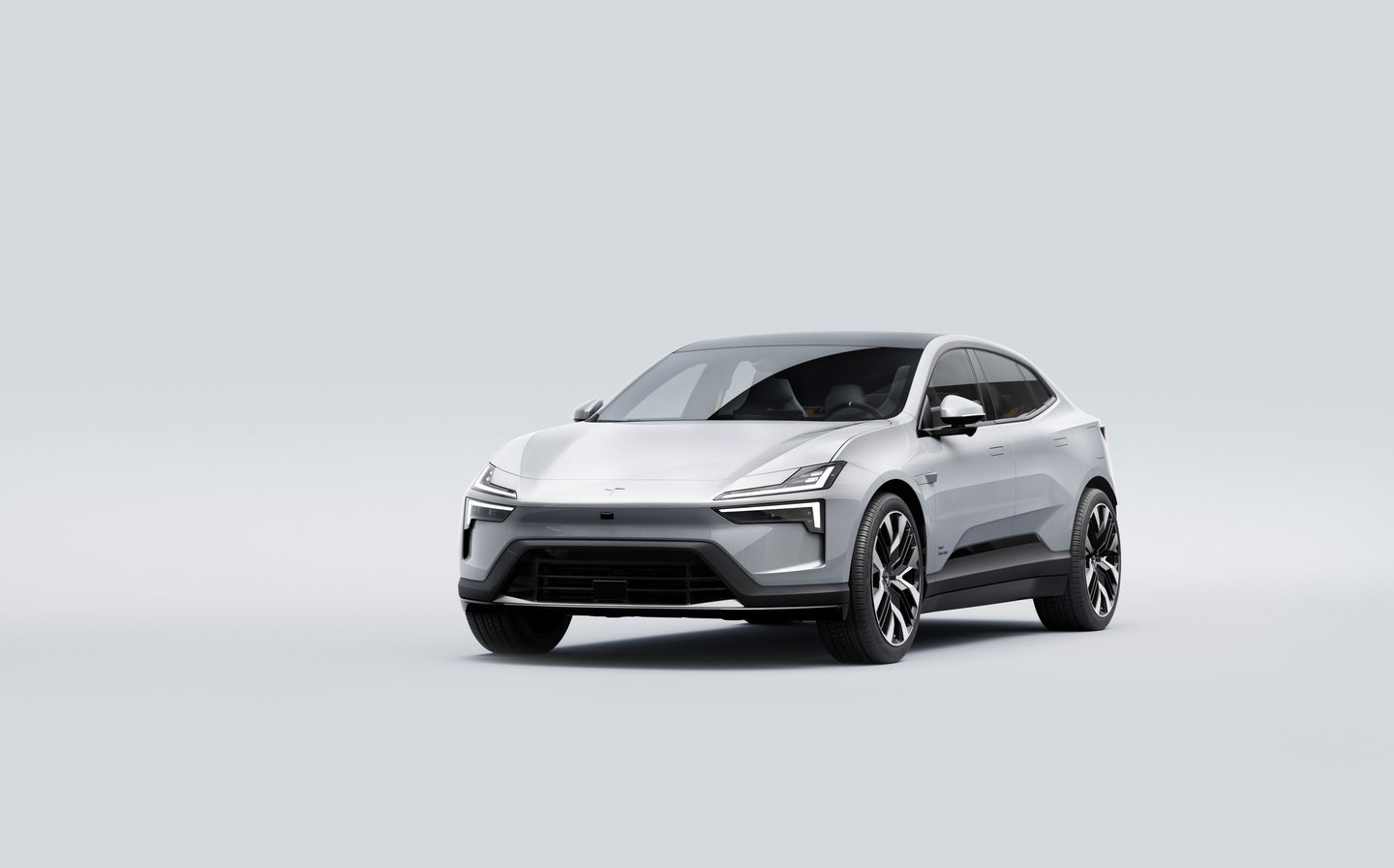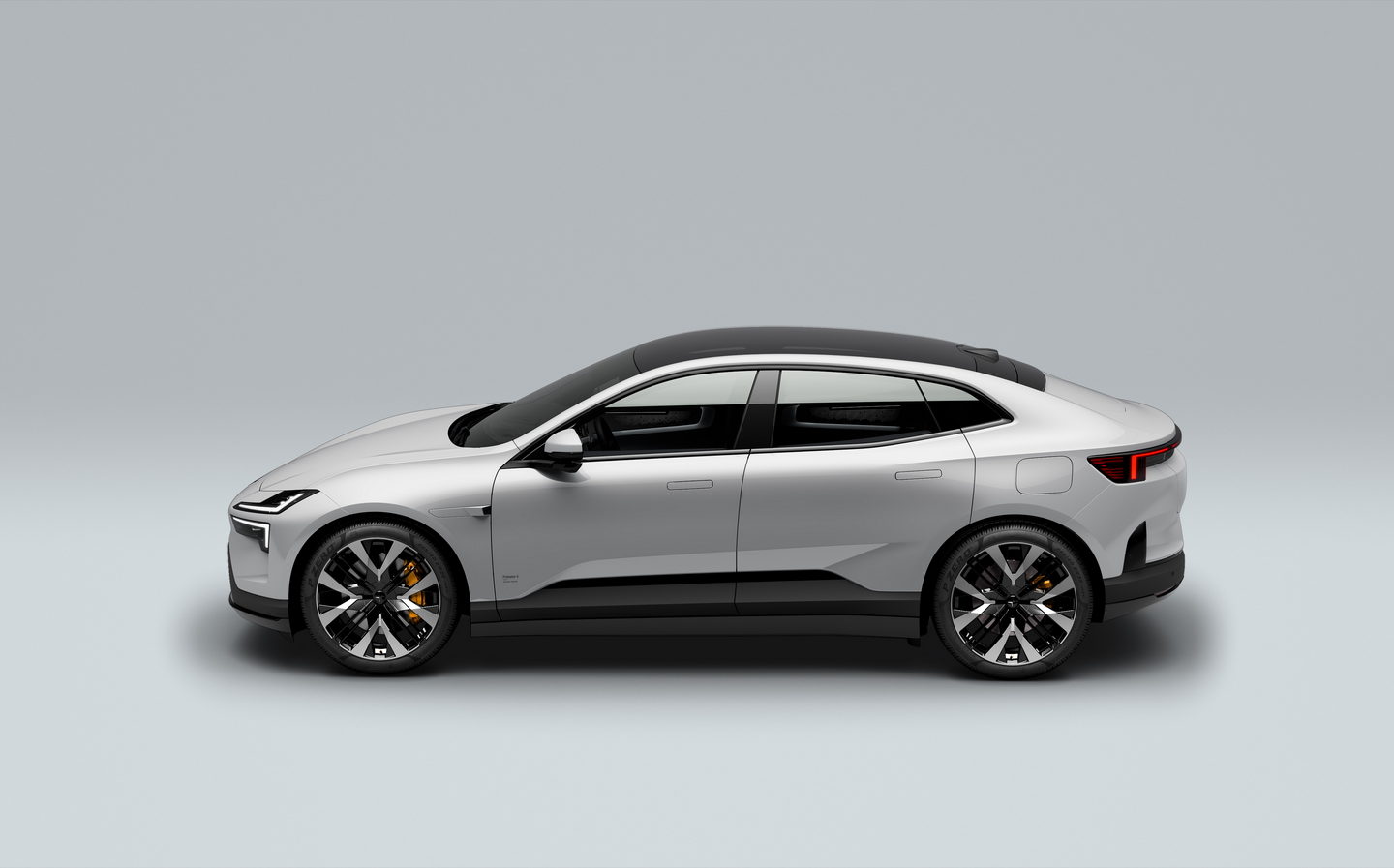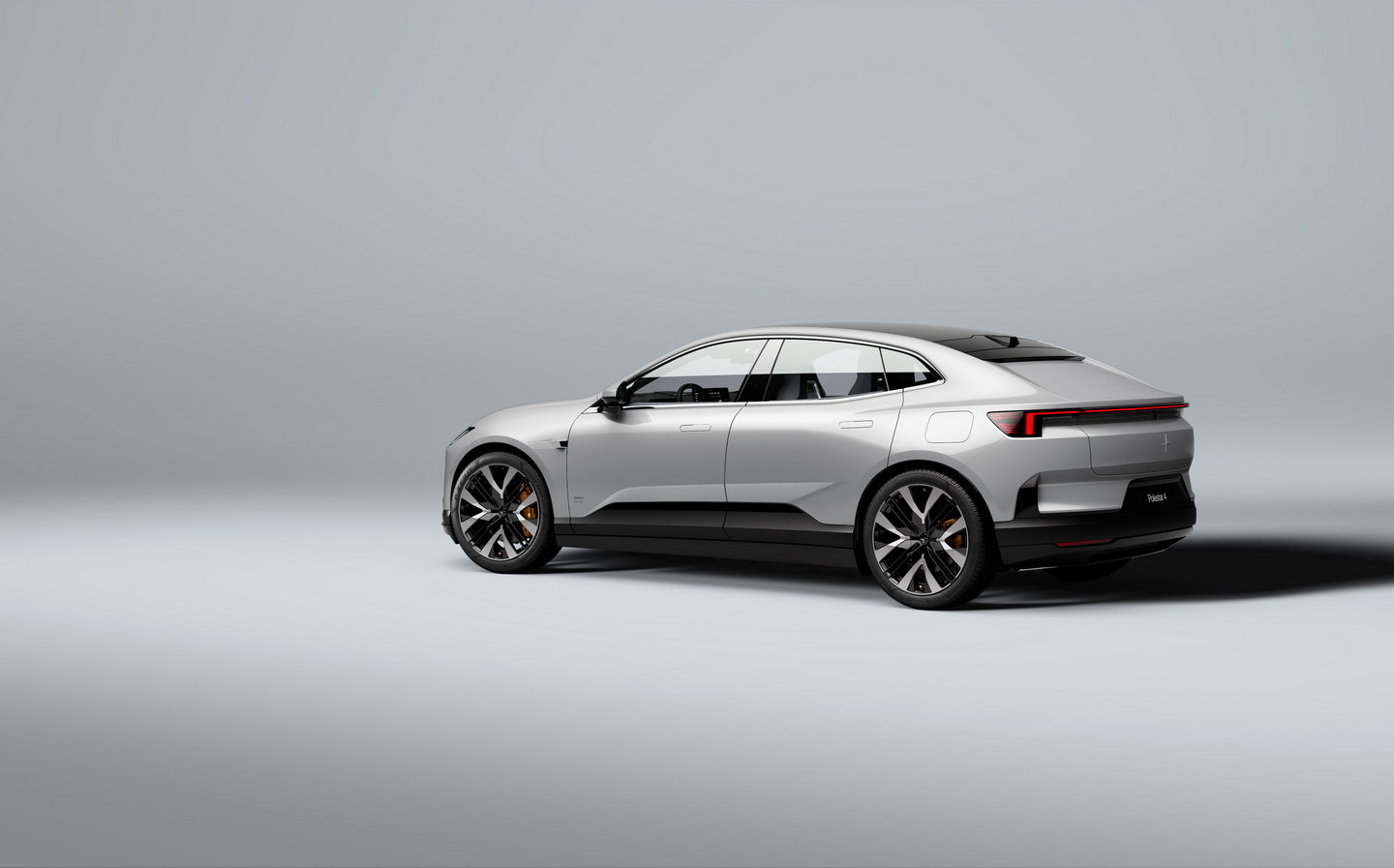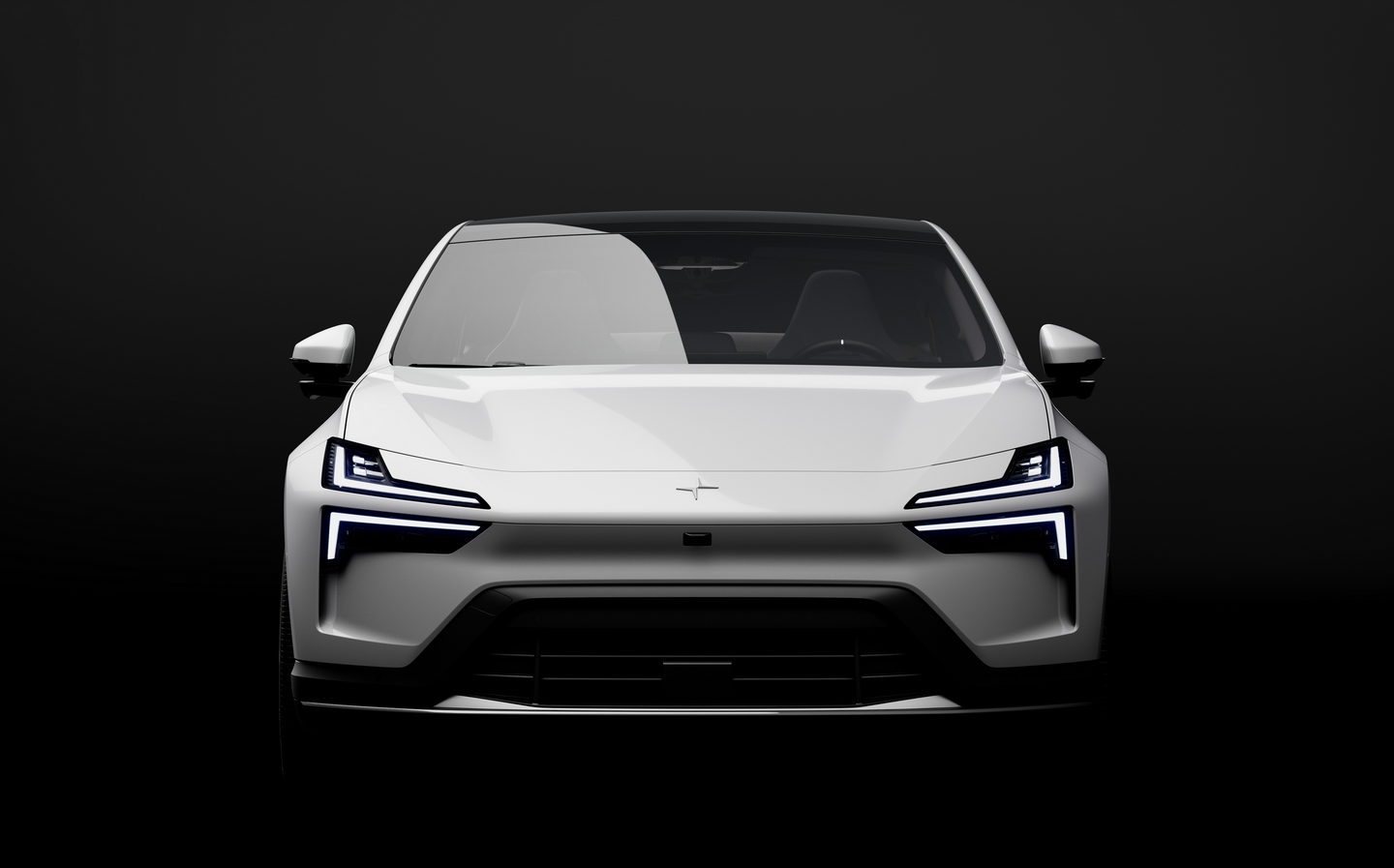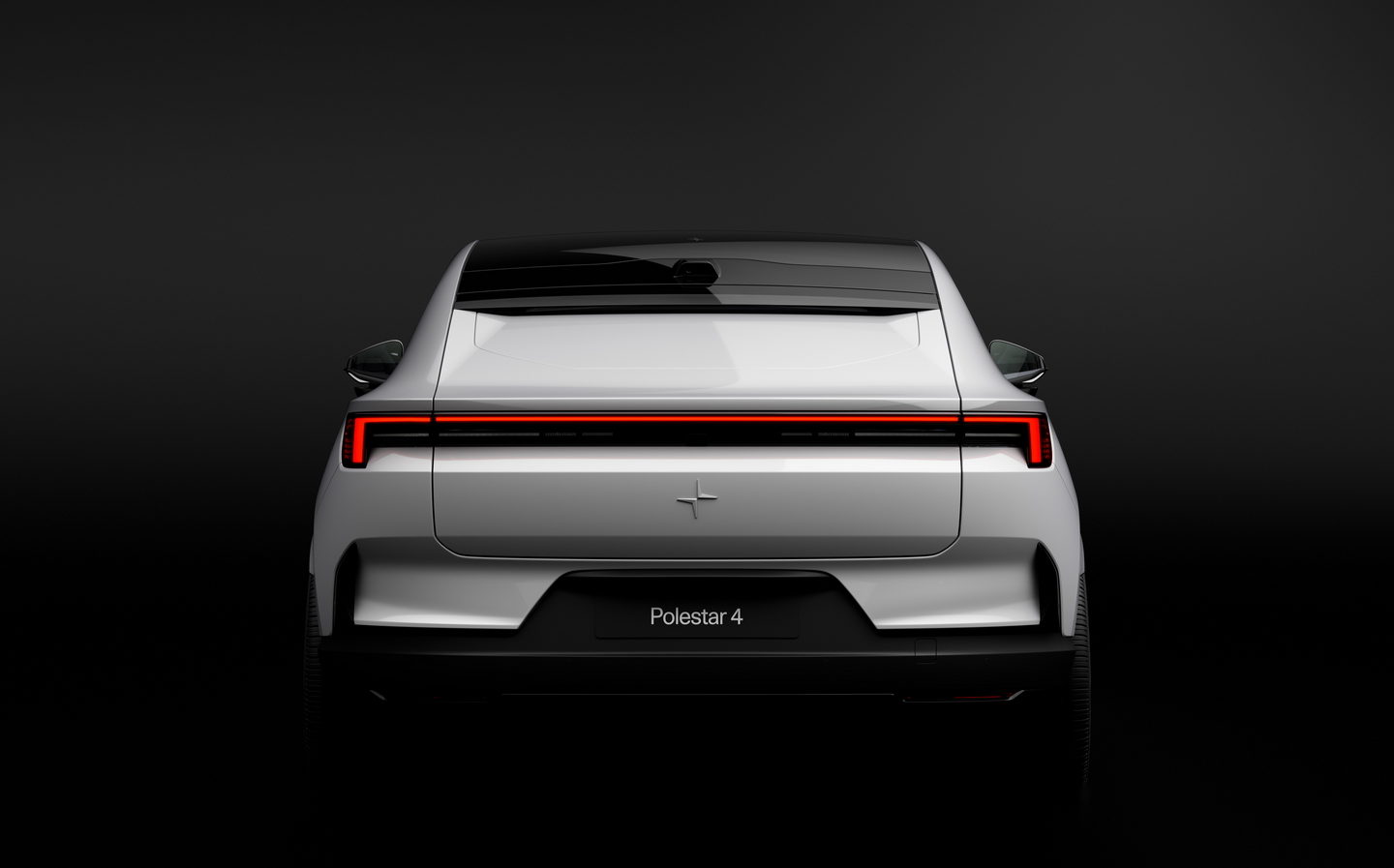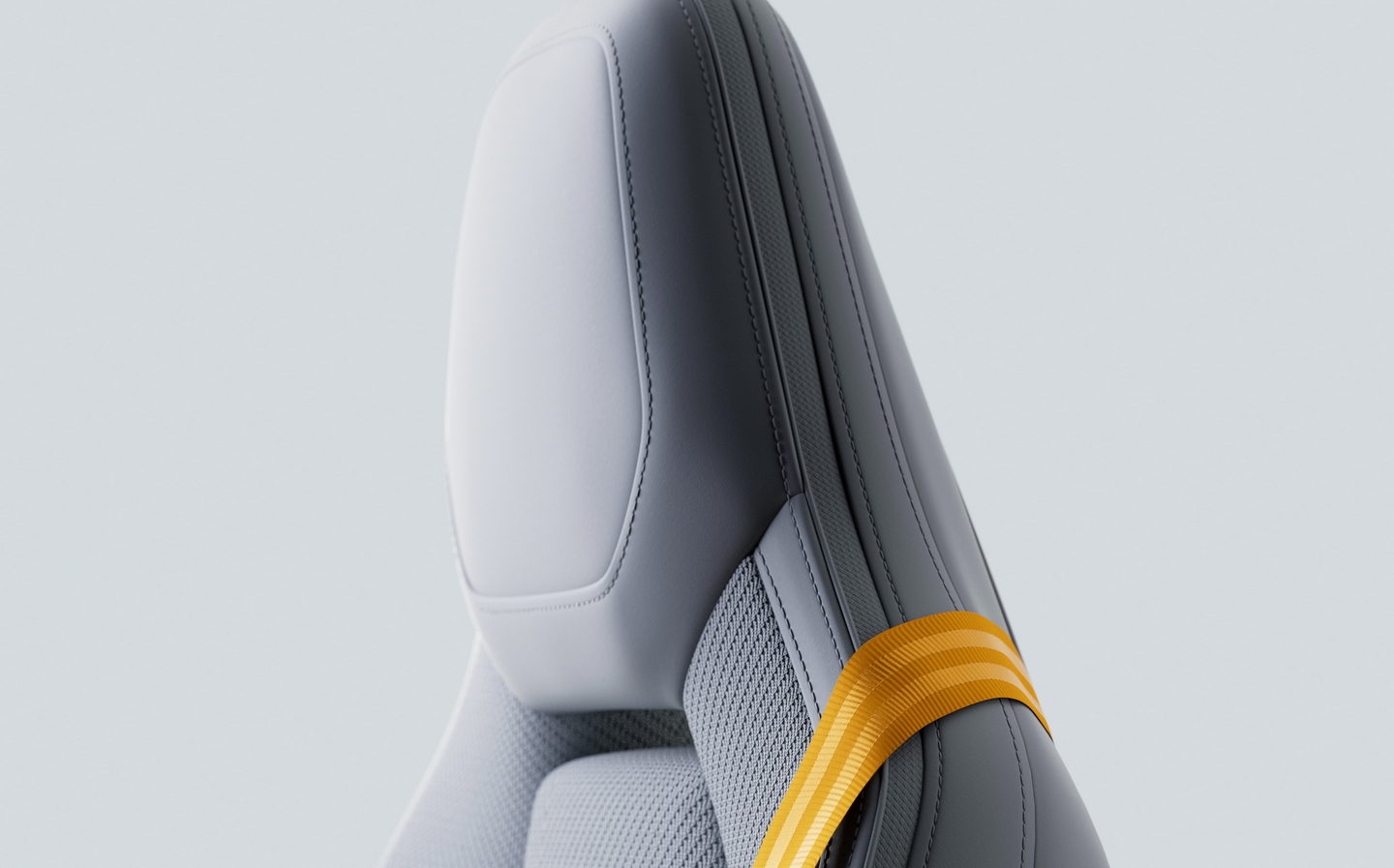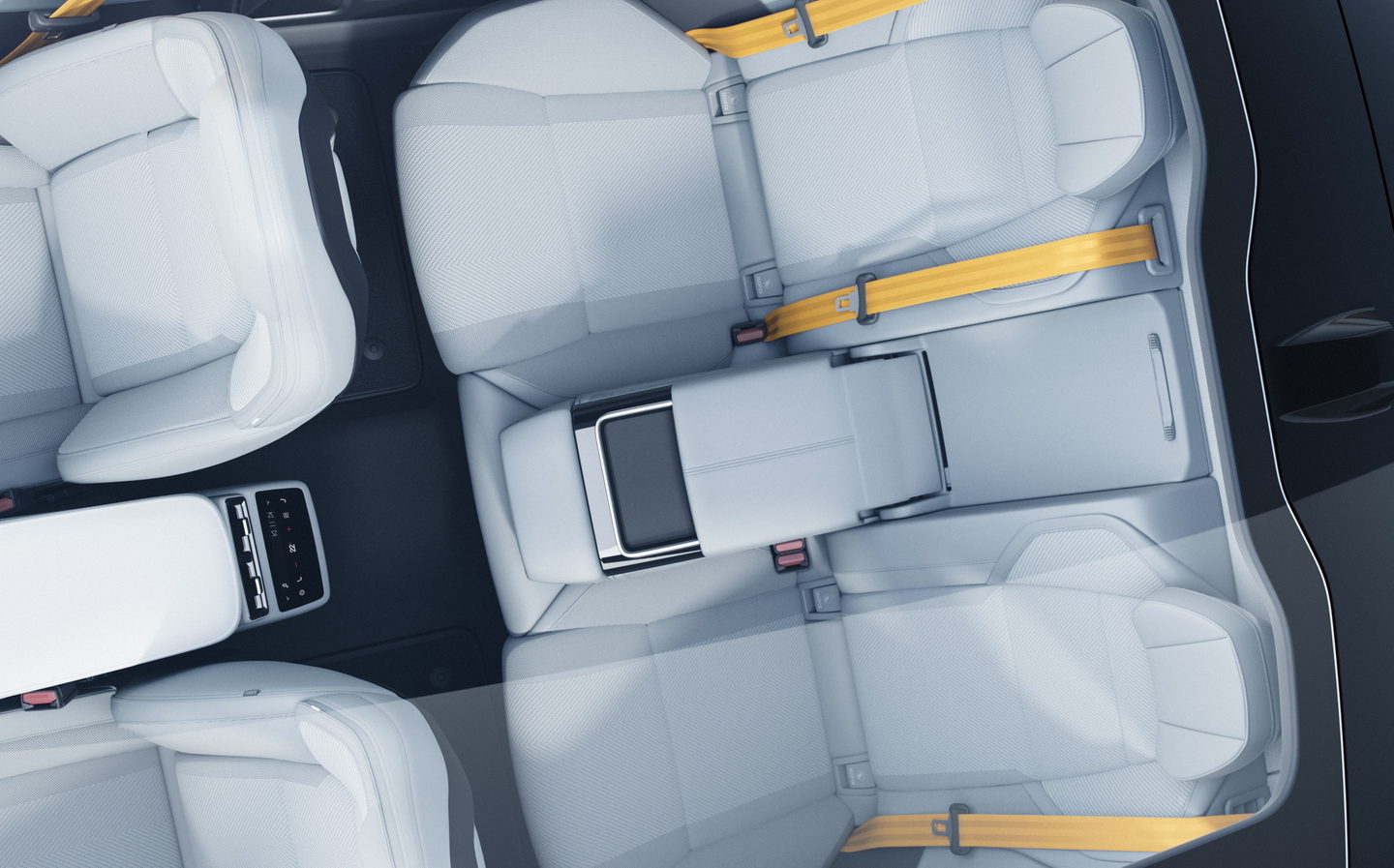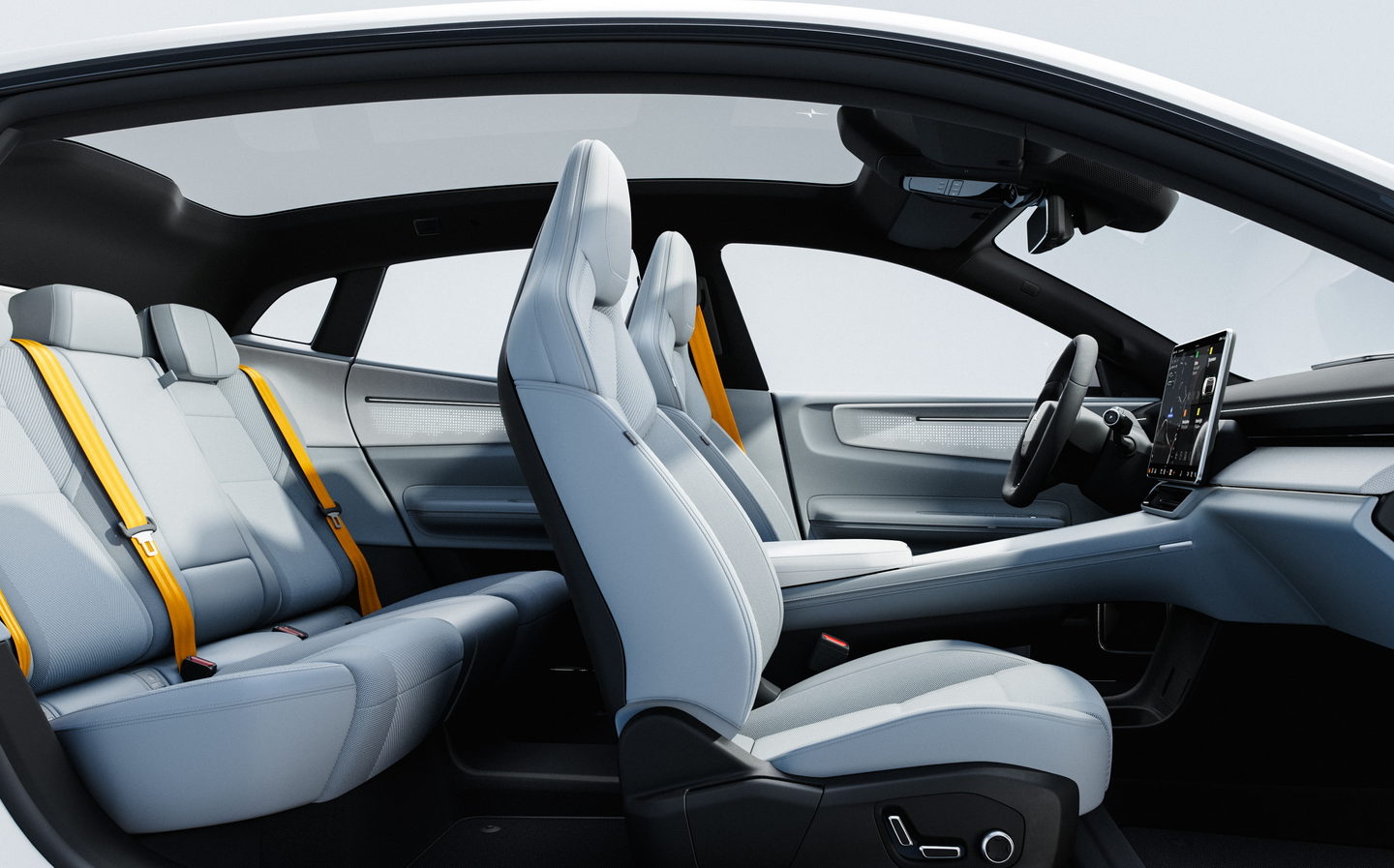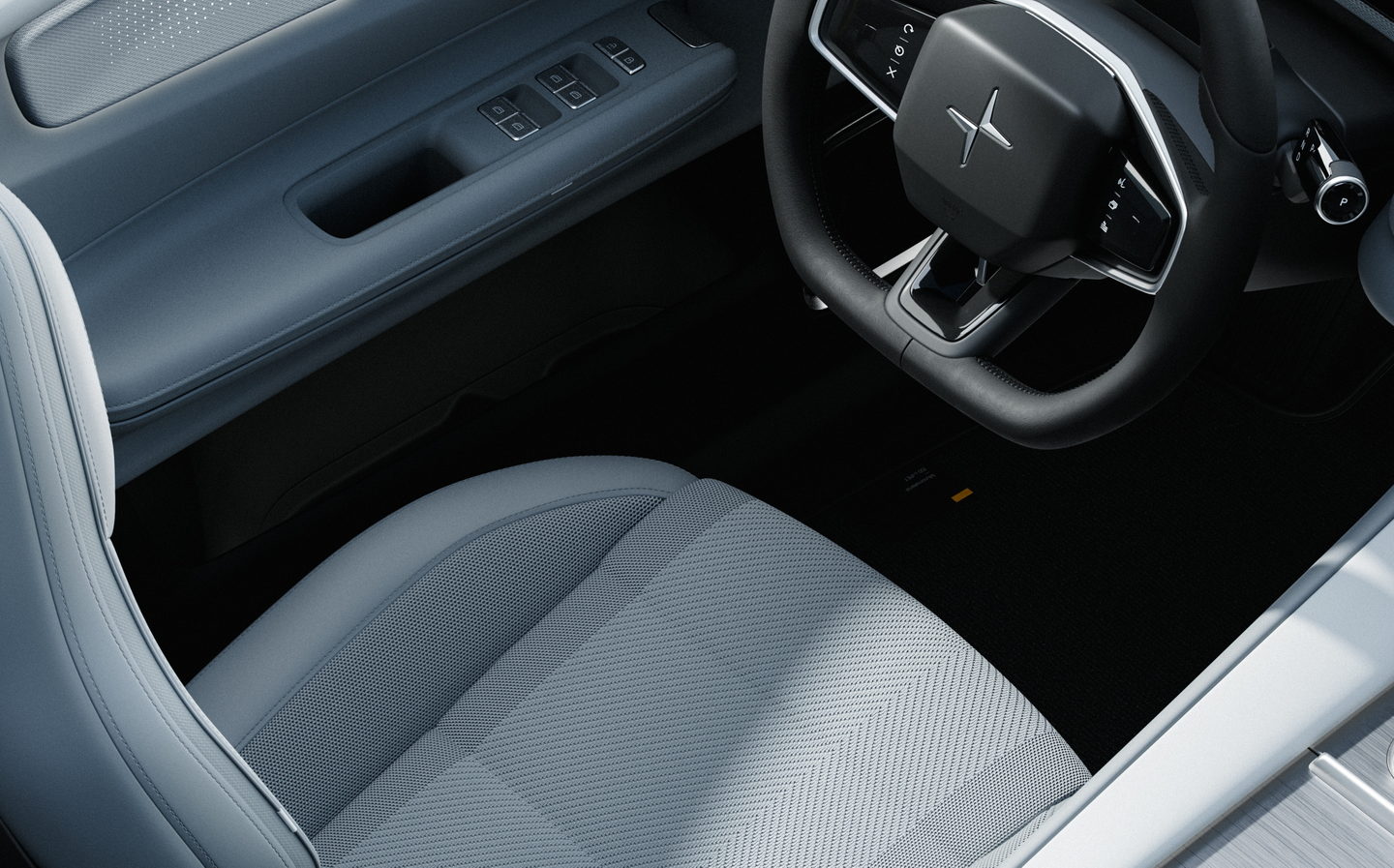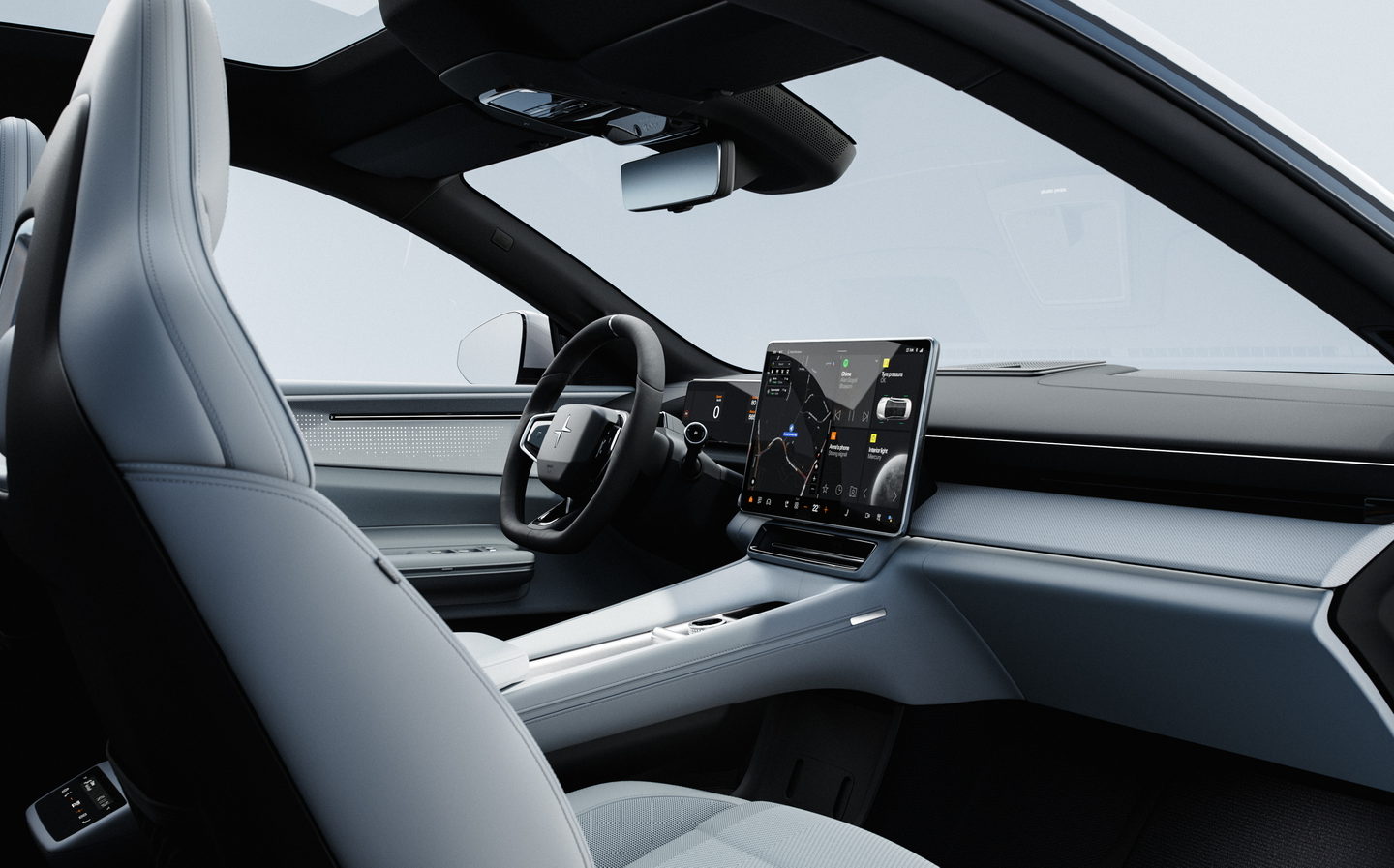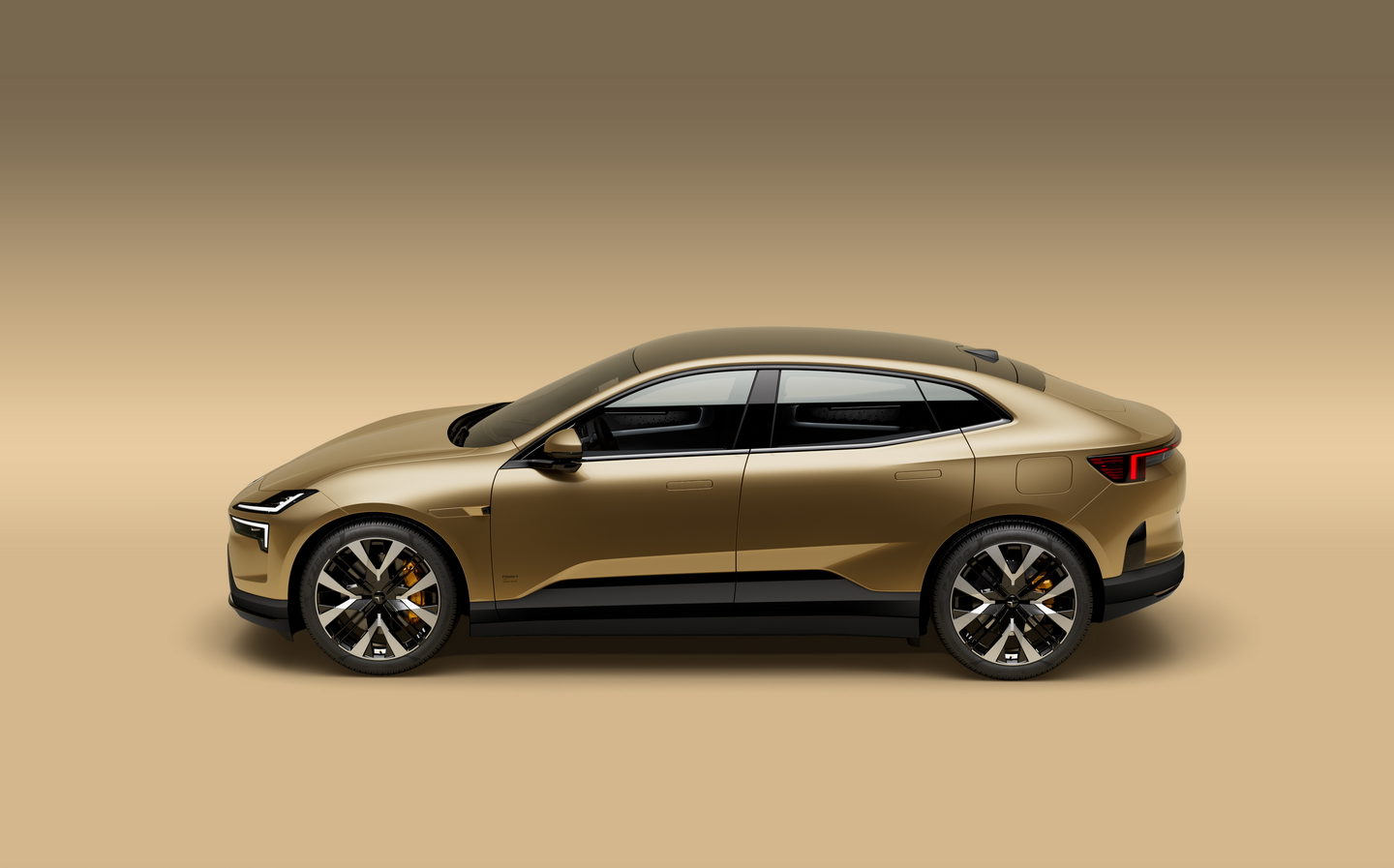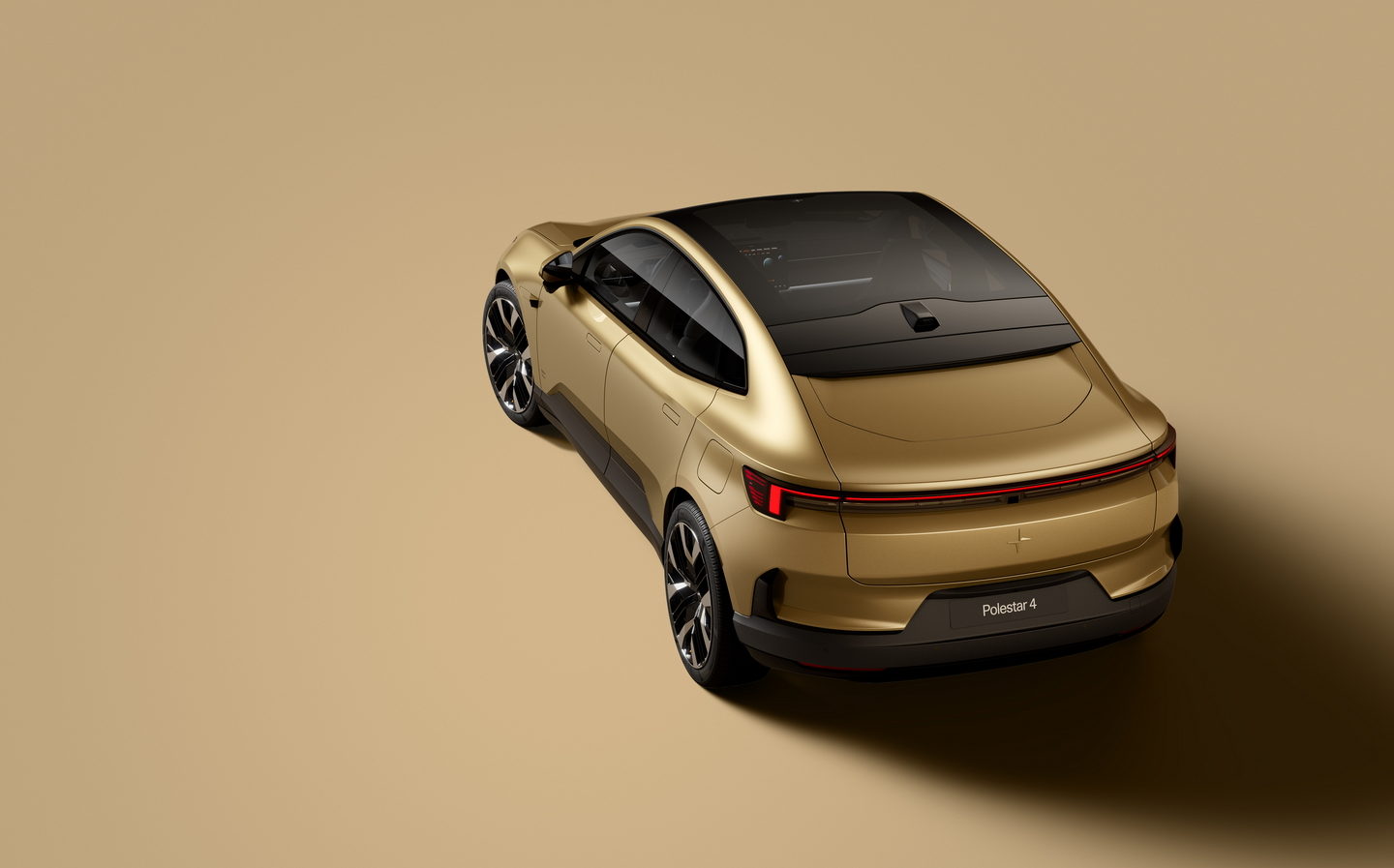Polestar 4 SUV coupé revealed as company’s fastest production car yet
Who needs a rear window?
In line with its plan to reveal one new model every year, Swedish electric car brand Polestar has followed up the Polestar 3 SUV with a new SUV coupé called, unsurprisingly, the Polestar 4. Less obviously, it sits between the larger 3 and the existing Polestar 2 saloon in terms of size and price.
Two different versions with different power outputs have been announced. The entry-level model has a single, rear-mounted electric motor rated at 268bhp. It also produces 253lb ft of torque, enabling a 0-62mph time of 7.4 seconds and a top speed of 112mph.
That’s swift enough, some might say, but Polestar’s more potent version is its fastest production car yet and features an additional motor to turn the front wheels, upping peak power and torque to 536bhp and 506lb ft respectively, while dropping the 0-62mph time to just 3.8 seconds. The top speed of the dual motor version is 124mph.
‘Long range’ means up to 372 miles on a charge
Both models are referred to as “Long range” variants as they share the same fairly hefty underfloor-mounted battery pack: one with a capacity of 94kWh (usable), which enables an official range of up to 350 miles in the dual-motor model or 372 miles in the more efficient rear-wheel-drive model.
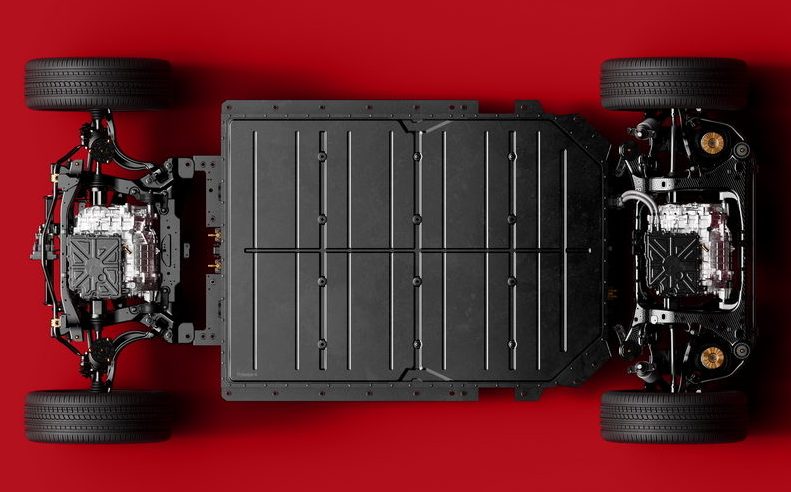
As standard, the Polestar 4 can be charged at up to 22kW AC or 200kW using an ultra-rapid DC public charging point. That translates into a 5-80 per cent recharge in 32 minutes, under optimal conditions.
Helping improve range by requiring less energy to control the cabin and battery temperature, a heat pump is fitted as standard.
The Polestar 4 looks smaller in the images than it is in reality. Polestar refers to it as a D-segment SUV and it’s roughly the same length as a Toyota Land Cruiser, at 4,839mm. Its wheelbase (the distance between the front and rear axles) is just a millimetre shy of three metres, which is about 20cm more than the Polestar 2’s and exceeds that of the Polestar 3, too.
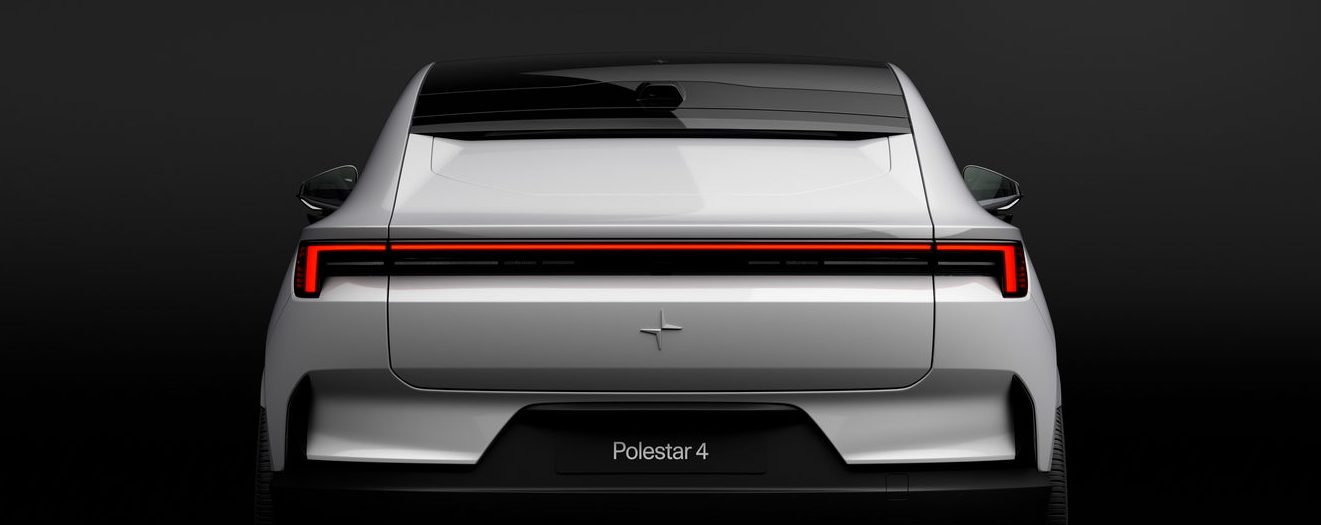
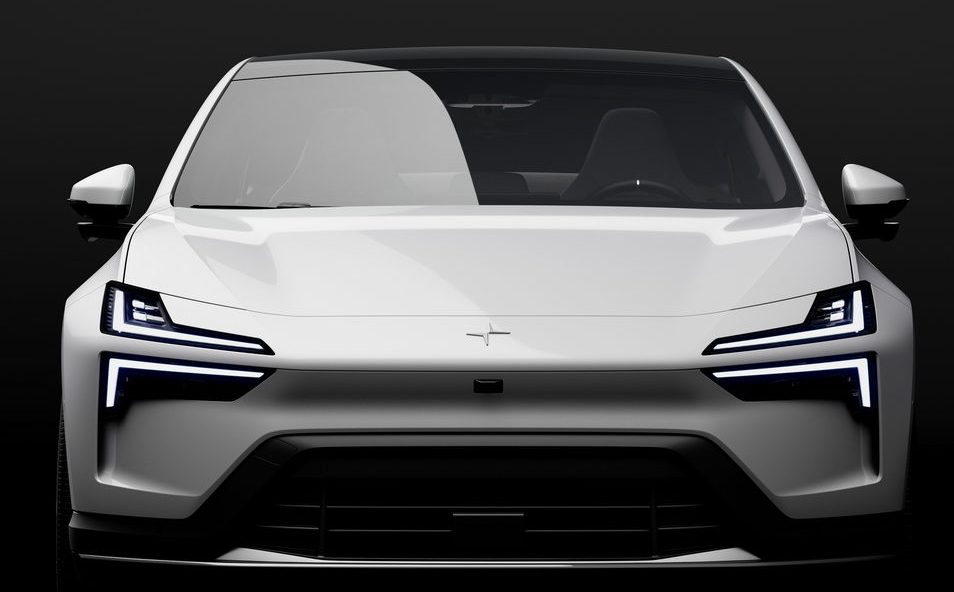
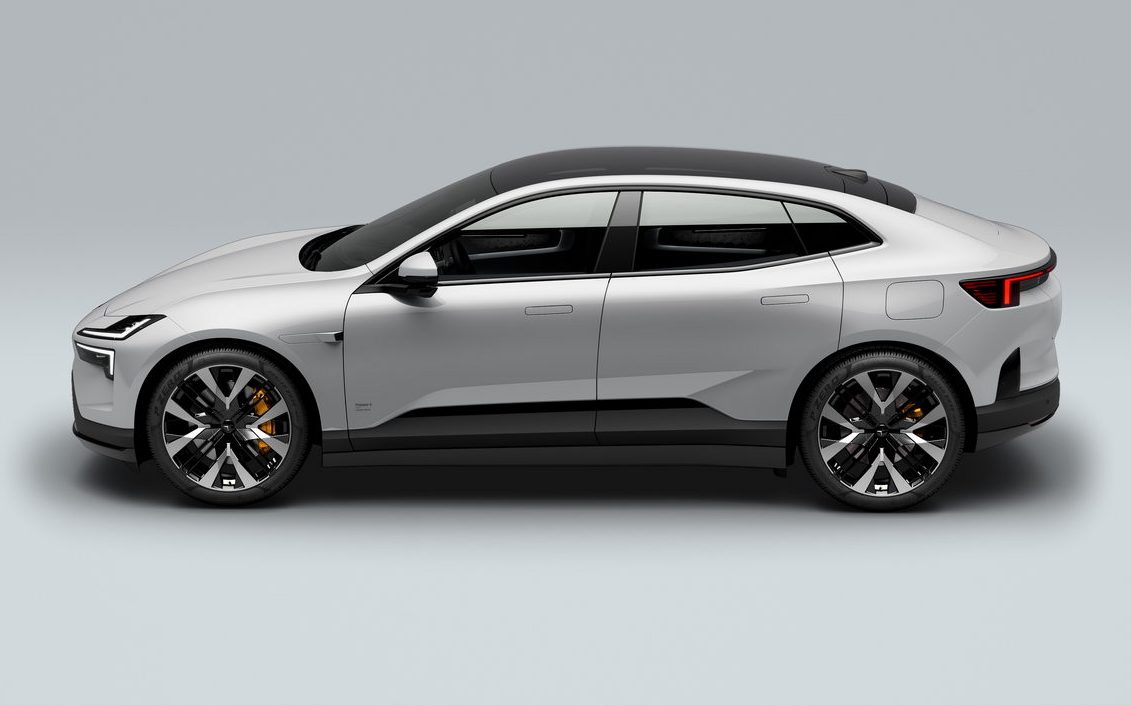
That aside, the big talking point in the Polestar 4’s exterior design is its lack of a rear window. Instead, there’s a full-length glass roof as standard and the rear-view ‘mirror’ shows images from a roof-mounted camera. At the touch of a button it can instead show the passengers sat in the back.
Five seats and lots of tech inside
Whereas some modern EVs are surprise four-seaters (our Cupra Born extended test car, for example), the Polestar 4 is a five-seat car (though the rear floor does seem to feature a slightly raised central tunnel), and its cabin design continues where the Polestar 3’s left off.
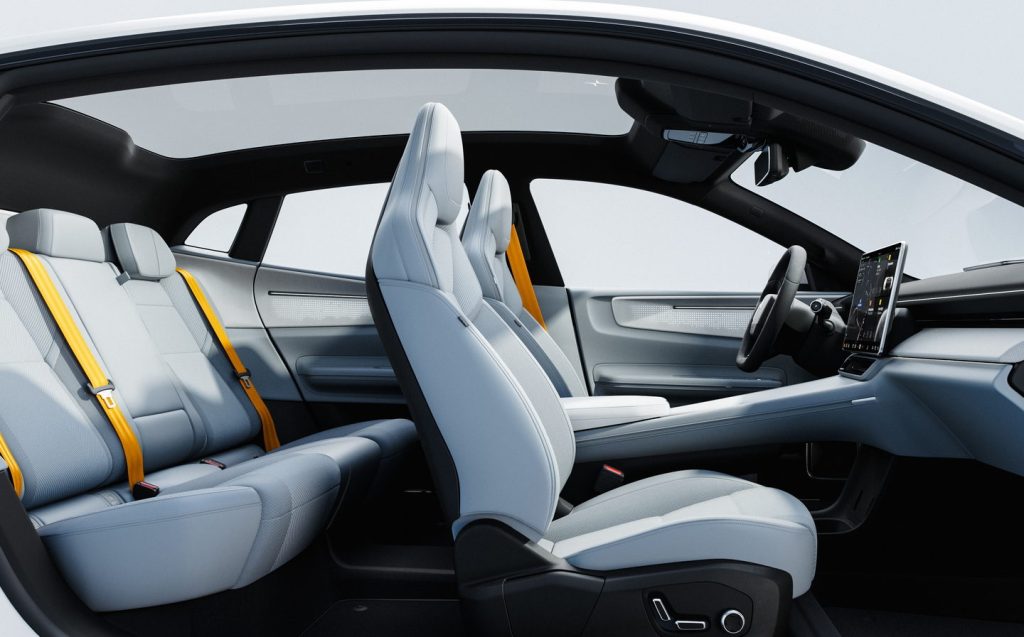
A chunky flat-bottomed steering wheel has a top-centre marker, behind it a 10.2in display for the instrumentation and a big 14.7in projection area for the head-up display. The drive selector takes the form of a column-mounted stalk.
In the middle of the dashboard is a large 15.4in landscape-orientated touchscreen running Android Automotive OS and the Snapdragon Cockpit Platform. This is different from Android Auto, which runs off Google smartphones; the dedicated operating system includes Google Assistant, Google Maps and Google Play built in, plus the option to download apps such as Waze and Audible, but you can also connect Apple devices via Bluetooth and even run Apple CarPlay if you prefer. Over-the-air updates future-proof the system.
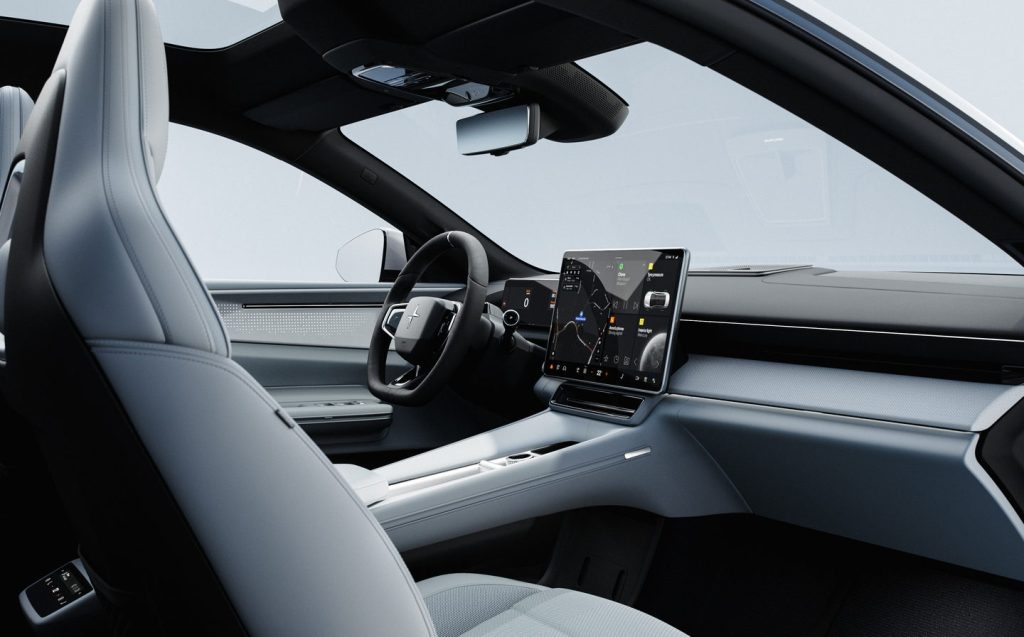
Sustainability is pushed to the fore in the Polestar 4’s cabin materials, including the use of a ‘mono-material’ approach where all layers of some parts are manufactured from the same core material to ease recycling without the need for disassembly.
Another feature is a new tailored knit textile made from 100 per cent recycled PET plastic, with no offcuts, that was produced in conjunction with the Swedish School of Textiles.
The carpets are made using recycled PET and reclaimed fishing nets while natural-fibre polypropylene and ‘bio-attributed’ vinyl can also be found in the cabin.

Leather takes the form of “animal welfare-secured Nappa leather” as part of a special Nappa Pack upgrade that also includes headrests in the speakers.
A full lifecycle assessment showing the carbon footprint of the car will be published alongside the ‘Polestar 4 Product Sustainability Declaration’ in 2024.
Lots of upgrade packs
Other less worthy upgrade packs include the Plus Pack for comfort and tech additions and the Plus Pro Pack for exterior tweaks, a higher-spec glass roof with electrochromic functionality (tinting at the touch of a button) and extended ambient lighting.
Exclusively available on the twin-motor model is the Performance Pack, featuring 22in wheels, Brembo brakes, Polestar Engineered chassis tuning and Swedish Gold detailing throughout.
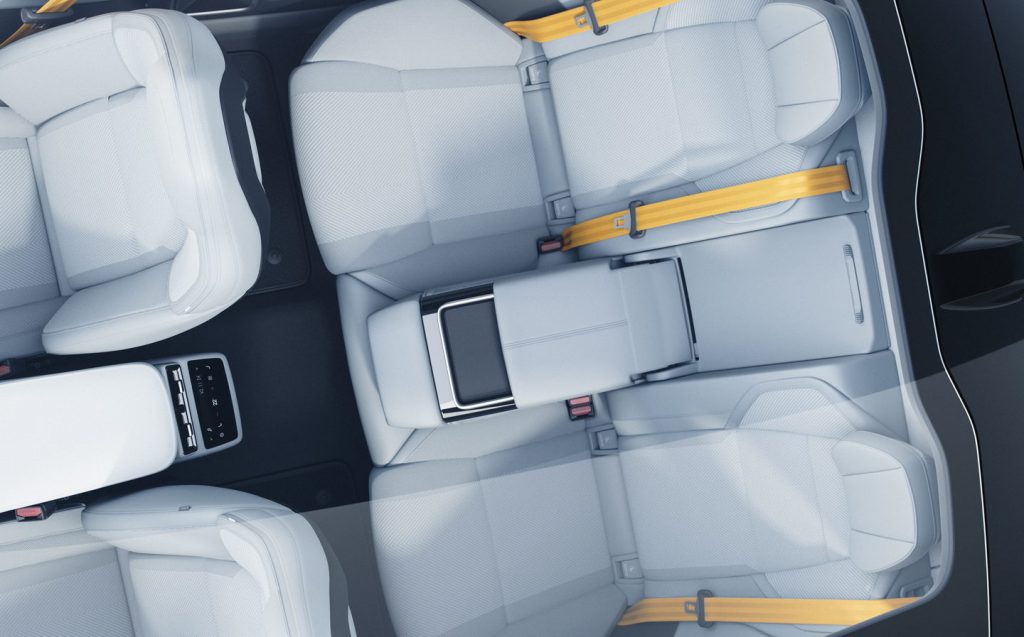
Last but not least, the Pilot Pack includes an advanced Pilot Assist system including ‘assisted’ lane changes. The Polestar 4 comes with radar, twelve ultrasonic sensors and twelve cameras, one of which monitors the driver.
Pricing and on sale date
Production of the Polestar 4 starts in China in November this year and UK deliveries are scheduled for ‘early 2024’. Prices are expected to start at around £55,000.
Related articles
- After reading about the new Polestar 4, you might like to check out our review of the Polestar 2
- Take a look a Will Dron’s preview of the 872bhp Polestar 5
- And click here if you want to see our guide to all the car makers’ electric vehicle plans
Latest articles
- Porsche 911 Carrera S 2025 review: Harder, better and faster – but is it the best 911?
- F1 2025 calendar and race reports: The new Formula One season as it happens
- Seven great automotive events to visit this summer, from F1 to art and champagne
- Watch new Porsche 911 GT3 smash Nürburgring record for manual cars
- Skoda Elroq 2025 review: Czech carmaker can’t seem to miss with its electric family cars
- Five best electric cars to buy in 2025
- Should I buy a diesel car in 2025?
- Zeekr 7X AWD 2025 review: A fast, spacious and high tech premium SUV — but someone call the chassis chief
- Denza Z9GT 2025 review: Flawed but sleek 1,062bhp shooting brake from BYD’s luxury arm


